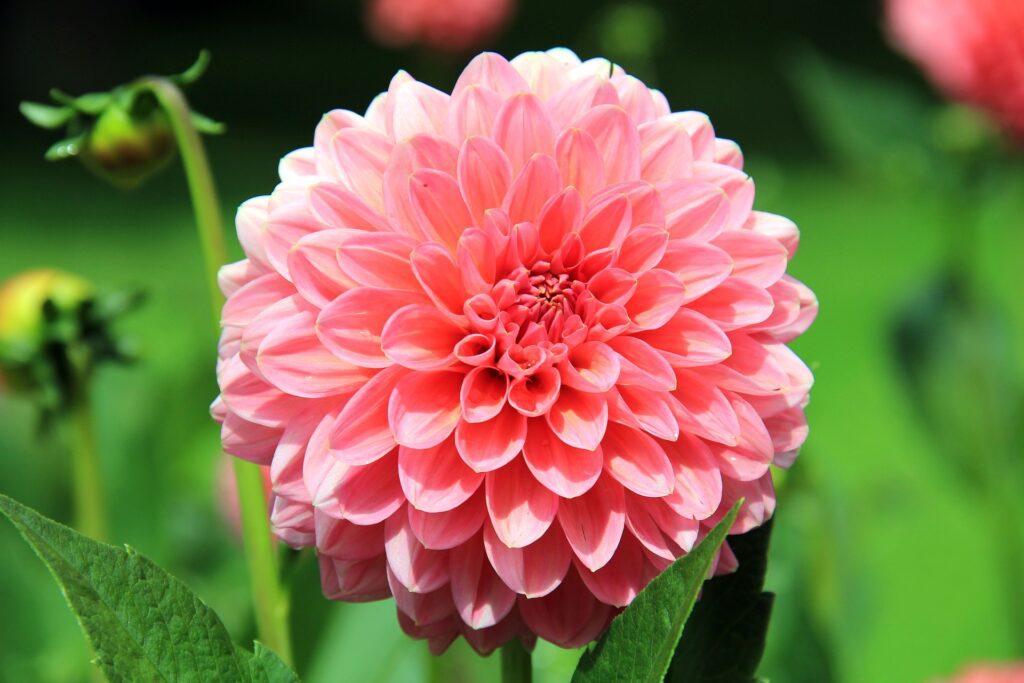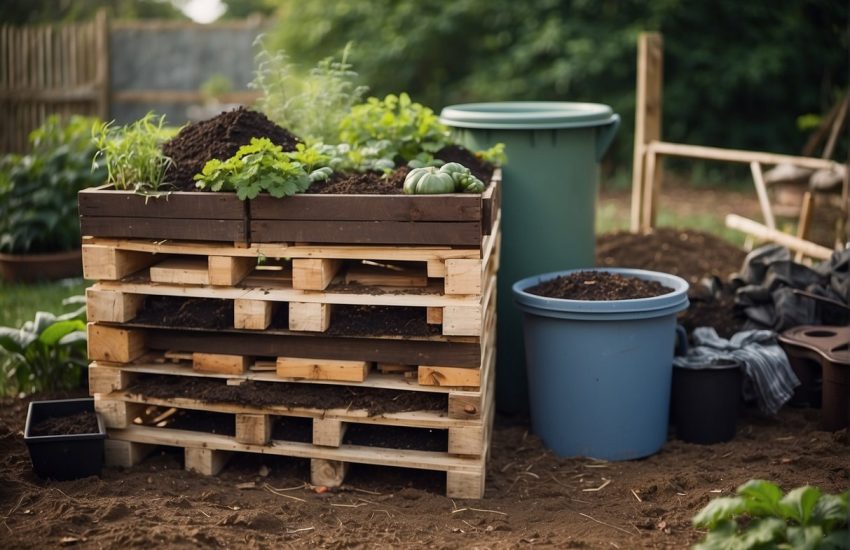Dahlias: How to plant, grow and care
Dahlias are the perfect all-around flower for the novice gardener. They’re easy to grow, aren’t finicky, and produce flowers all summer long. Dahlias are also versatile flowers – their blossoms can be used in bouquets and arrangements for spring and summer weddings as well as autumn harvest season bouquets.
They are also great flowers for the home. Dahlias are relatively easy to grow, do not require much attention, and are extremely hardy. They are grown for their foliage and flowers, which can be used as cut foliage in arrangements or as filler material in hanging baskets or pots.
Just like other flowers, Dahlias bloom best when given plenty of sunshine. They also prefer moist soil that is full of nutrients and well-drained. Because they are so tolerant of hot weather and drought, Dahlias can be planted outdoors in full sun all summer long.

Dahlias characteristics
Dahlias are a member of the Asteraceae family, which include sunflowers, daisies, chrysanthemums, zinnias, and aster. They inspire awe and good cheer. Growing vegetables? Put a row of dahlias on the border where they will not shade your edibles from being shaded by taller plants. They make for lovely cut flowers too.
Dahlias are planted in the ground in late spring. They are considered a tender perennial in colder regions of North America, but gardeners in zones 6 and 7 may have luck keeping them in the ground as well. In colder zones, dahlias can either be treated as annuals or dug up after the first frost and stored indoors for winter.
Dahlias are tolerant of drought and may even thrive in full sun if given good drainage. If a hot summer is predicted, however, it’s best to plant dahlias indoors when cold weather is imminent. Dahlias can be grown outdoors during the summer in zones 8 and up that have received plenty of rain.
Dahlia Basics: Planting, Care, and Growing Tips
Dahlias are generally thought of as annuals or tender perennials depending on your climate and experience with them. There are literally thousands of varieties on the market now that have been bred for gardeners looking for color through their bloom season.
Dahlia Planting Season
-Cold soil is intolerable to dahlias. Plant whenever any threat of frost has passed and the soil reaches 60°F (15°C).
-A good general rule of thumb is to plant dahlias a few days after tomatoes.
-To gain a head start on the season, some gardeners grow tubers inside in pots one month in advance. Dahlias between medium and dwarf size will thrive in containers. Some larger varieties, like ‘Maria Elena’ and ‘Sun Crest,’ can be grown as container plants in a large pot.
See Also: Peonies Plant, Grow And Care
Dahlia Planting Methods: Seeds, Transplants, Cuttings
Seeds can be sown indoors or in pots by transplanting when the soil is warm and thoroughly warmed with a slow-release fertilizer. Sow seeds at least ¾ inch (2 cm) deep but not more than 1½ inches (4 cm). Purple flowers may result from the strain of cold. Wait another week before planting. Transplanting seeds is often recommended for maximum germination rates since dahlias are so hardy.
Transplanting can be accomplished by raking or by use of a trowel. Dig the tubers out of their peat pots and plant holes 1 to 2 inches (2.5-5 cm) deep with room for several inches of soil over their roots. Prepare the desired spot for transplanting by digging around it or digging up existing sod.
Plant the tubers in loose soil and cover them with a thin layer of mulch and compost to hold moisture in the soil. Mulch is important to retain moisture so be sure not to overly mulch your dahlias as they need light to develop good foliage growth. Cover with a 1/4 to ½ inch (0.5-1.0 cm) layer of soil to retain water and keep the tubers warm.
Cuttings are very easy to take but only do it when the weather is cool and night temperatures are relatively below freezing. Cuttings come in all sizes and can be planted into containers, planters, or directly into the ground. Remove any discoloration from cuttings before planting as it can indicate disease or poor root development. Apply rooting hormone when setting them in potting soil and leave them outdoors for 8 weeks prior to bringing them indoors for winter storage.
Growing Dahlias in Containers
Dahlias of medium to dwarf size grow nicely in pots with drainage holes that are large enough to hold the plant when it is fully grown. Usually, a container measuring 12×12 inches will do.
Follow the instructions on the packaging and use a soilless mix together with moisture-retaining co-polymer crystals.
- Observe the depth specifications.
- Add a few inches of the soil-crystal mixture on top of the tuber.
- If required, mist the tuber with water to encourage development.
- If the soil is moist 1 inch below the surface, do not water.
- As indicated, fertilize throughout the summer.
- If the roots get exposed, add dirt.
Caring For Dahlias
Dahlias need at least 4 hours of direct sunlight per day but will require a bit more if flowers are to be seen all summer long. Water dahlias deeply once a week using a drip irrigation system if possible or at least with a soaker hose or by hand. Capillary mats of wire attached to the base of the pot or soil-crystal mix are a great way to direct water to the roots. Consider matching your dahlias with other plants that will benefit them. They like good drainage and being in full sun, but also need plenty of moisture when young and after frost, but not so much during summer.
What is the dahlia flower used for?
- Dahlias are utilized often nowadays for both aesthetic and practical reasons, including food, cosmetics, pharmaceuticals, landscaping, and even as raw materials for the production of colors. This beautiful and medicinal plant’s tuberous roots and blossoms can be utilized for therapeutic reasons.
- The roots of dahlias are rich in vitamins, minerals, and antioxidants. The flowers contain a substance that is known to have anti-inflammatory properties, which means it has the potential to reduce pain and inflammation for those living with arthritis, joint pain, or other inflammatory conditions. This would make it one of the best medicinal herbs out there.
- The seeds of dahlias are used as a folk remedy for Diabetes. Not only can they help in digestion but they act as diuretics and is therefore useful in treating such diseases as hypoglycemia (low blood sugar), hyperglycemia (high blood sugar), and diabetes.
- The flowers of dahlias have been used to make a tea that is useful in treating a variety of conditions such as gout, rheumatism, ulcers, arthritis, and migraine. It relieves stomach problems and the tea can be used for stomach cramps, cramps associated with menstruation, or excessive urination.
- A delicious recipe from traditional European cuisine simply uses dahlias as a soup ingredient. You will need to blanch the tuberous roots in boiling water before adding them along with fine herbs and spices or garlic and onions. This soup is highly nutritious and can be an easy way of increasing your intake of vitamins C and B complexes.
- The flowers of dahlias can double as an effective cosmetic ingredient. The flowers are rich in antioxidant compounds, which are known to prevent and heal a variety of physical conditions such as dermatitis, eczema, acne, burns, and wounds. To use the flowers as a cosmetic ingredient, you will have to grind up the blossoms and add water to your next shampoo or bath product. Add this mixture to your favorite bath products to make them even more effective!
Conclusion
In the world of medicinal herbs, dahlias have a lot of factors that make them one of the most popular. It is not only a general medicinal herb but also has anti-inflammatory qualities and is alkaline-forming in nature. Although it can be used as a medicinal herb, it can also be used as a cosmetic ingredient to heal wounds, dermatitis, and ulcers. For what dahlias are worth, they are one of the best flowers out there and need not be planted in any containers because they can easily grow into bushes and are beautifully attractive all year round.
FAQS
What is the common name of dahlia?
Garden dahlia, also known as Dahlia pinnata (D. pinnata), is a species of the genus Dahlia in the family Asteraceae. It is widely cultivated and the type species for the genus.
What do dahlias attract?
Dahlia is a standout in the garden because it is large and gorgeous. Although gardeners must dig up the tubers in late fall and transplant them in the spring in most areas, the work is well worth it. Large flowers, some up to 10 inches across, are the final product, which is great for luring hummingbirds and butterflies.
Which country is dahlia from?
Dahlias, which are Mexico’s national flower, are believed to have originated there even though they have been grown there for well over 200 years. The 18th-century Spanish botanist Abbé Cavanille is thought to have given dahlias their name in honor of the Swedish environmentalist and scientist Andreas Dahl.
Where do dahlias grow best?
Dahlias bloom at their peak when they are cultivated in good, well-drained soil with full sunlight. Dahlias for borders can be planted 15″ apart from the center; standard varieties are often spaced at around 18″. Till the dirt is 12 inches deep.
What color is dahlia?
Peach, red, lavender, white, yellow, orange, pink, and bi-color are some of the flower hues. From tiny pom poms to enormous, corsage-worthy blooms, flowers come in a variety of sizes.
What soil do dahlias like?
When it comes to soil, dahlias are not picky. Grow in any rich, wet, but well-drained soil for the greatest results. Add some organic matter to the soil, such as well-rotted manure. Add some grit to the planting hole if you’re growing on dense clay. Topdress the area a few times with other good soil amendments.
Is dahlia a weed?
Dahlias are not invasive and can be grown in full sun or partial shade. They are tender plants, so it’s best to plant them where they will not be damaged by frost or wind, as they do not tolerate cold. This can cause their tubers to grow underground, which makes them difficult to transplant in spring and results in slow growth. Plant again next year at the same time you would have planted the first time if it looks like it will survive cold spells, as dahlias require at least two seasons to bloom and produce seed tubers for next season’s planting.
Will dahlias grow in shade?
Dahlias do well in full sun or partial shade, so long as there is good drainage. Dahlias are a slow-growing plant and will require two growing seasons to produce seed tubers for the next year’s planting. They can also be planted indoors; choose an area with bright, indirect light and make sure it still drains adequately.
What dahlia varieties grow best?
Dahlias must be planted in late winter or early spring to produce flowers in the warmer summer months. This lets them grow more tubers and enjoys longer summers, which makes blooms last longer into August and September when grown outdoors.
What does a dahlia symbolize?
The meaning of the flower dahlia varies depending on the color, but it will always be associated with a positive message of happiness, love, and beauty.


